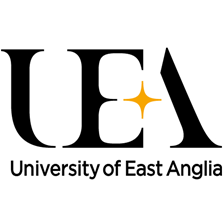
How to build quantitative evidence of your teaching expertise
Teaching impact can be a difficult thing to measure and assess. It can be challenging to quantify the impact of a teacher’s work, especially in the short term, making it difficult for teaching-focused academics to demonstrate their value and achievements. But you will need to provide this evidence if you apply for academic promotion, an AdvanceHE fellowship or an external teaching award.
Katharine Hubbard has constructed and shared a useful framework for collecting evidence of teaching excellence. It provides a clear way of organising your evidence and identifying any gaps and I strongly urge you to use this helpful tool.
Briefly, you will require two types of evidence:
Qualitative (words): (anonymised) supportive quotes from students, testimonials from colleagues etc.
Quantitative (numbers): student evaluation scores, citations, views, downloads and social media impact.
I won’t go into more detail about building a framework of evidence here, as Katharine does a much better job of this than I could. Instead, I want to focus on how to develop and track quantitative measures of impact.
Publishing a fully fledged teaching-focused peer-reviewed paper is a daunting task, especially for those who have only recently moved from a research-focused career path. Instead, break this down into smaller steps, and publish them as short opinion pieces, classroom resources, new approaches and ideas.
- Resource collection: How to progress in your academic career
- Three key tips to help balance research and teaching duties
- How to use social media analytics to effectively expand your network
We have recently started posting work from our Biosciences Teaching and Education Research group on Zenodo. This is an open-access repository developed under the European OpenAIRE initiative, which aims to drive openness and transparency in research and scholarly communication.
For instance, Kelly Edmunds and Helen Leggett published an article looking at improving students’ resilience and sense of agency by developing healthy attitudes to failure in scenarios in which the stakes are lowered.
In a second example, I noted that students needed support understanding a common method for measuring the mutation rate in microorganisms, called the Luria Delbrück assay. To help, I wrote an R Shiny app that allows students to change the rates of growth and mutation, independently, in E.coli and simulate the number of antibiotic-resistant colonies they would observe. Once tested, I uploaded this to Zenodo.
Having a community page on Zenodo makes it easier for others to find our work and track individual and collective impact. There is also an established database, the National Teaching Repository, hosted on figshare, as another space for colleagues to share and upload resources, research and ideas. Individual educators should take advantage of the opportunity to join a community for viewing and sharing ideas.
One thing all these data depositories have in common is that they all generate a DOI (digital object identifier). A DOI makes a piece of work permanent; once assigned a DOI, the contents cannot be changed, although all these databases allow new versions or revisions to be submitted, generating a new but linked DOI. Websites can be changed any time and often accidentally break weblinks. With a DOI, there are no broken backlinks, and anyone can return to your work for years. Once work has a DOI, you are on the first step towards tracking and measuring your impact.
I recommend everyone working in higher education has an ORCID account. ORCID (Open Researcher and Contributor ID) is a unique identifier for researchers and their work. Having an ORCID account can be beneficial for ensuring that your work is correctly attributed, even in cases where you have a common name, have changed names, or have moved across multiple organisations over your career. Any work submitted to Zenodo, figshare or similar databases will allow you to provide your unique ORCID identifier to be displayed next to your submission. Once assigned, you can import this work to your ORCID account, creating a profile that tracks all your outputs permanently. Many institutional websites will let you display your ORCID profile on your webpage.
Finally, a DOI enables altmetrics, which are used to measure the impact and reach of a research output beyond traditional citation counts. When a piece of work is assigned a DOI it becomes easier to track how it is being used and shared online. Altmetrics can include metrics such as the number of times something has been downloaded, shared on social media, or mentioned in the news; a wealth of quantitative evidence that you need to demonstrate the impact of your work.
Posting your work to online repositories will help you develop your CV, share and track the impact of your work and give you the evidence you need to support future career development. This not only allows you to generate impact for your work quickly, but enables discussion with your peers. Importantly, this does not preclude submitting to journals or publishing on reputable platforms such as THE Campus to reach a wider audience and increase visibility for your work.
Two important points for consideration when sharing your work:
- Who owns your work? The copyright for teaching materials that your employer explicitly asked you to produce may reside with them, for example your series of classroom lectures. On the other hand, presentations at meetings, helpful guides and so on should be yours to distribute. In either circumstance, it may be acceptable for you to distribute the material but it is a good idea to check with your employer first.
- Teaching materials often contain third-party copyrighted extracts or images. Internal use, with proper attribution, is often allowed under “fair use” provisions, but this will not extend to public release so should be considered before you share the material more widely.
Consider doing everyone a favour by sharing your teaching work more widely and getting credit for it.
This article was originally published on Zenodo, entitled “Evidence your teaching with data depositories”.
Philip Leftwich is lecturer in genetics and data science in the School of Biological Sciences at the University of East Anglia.
If you found this interesting and want advice and insight from academics and university staff delivered direct to your inbox each week, sign up for the THE Campus newsletter.




